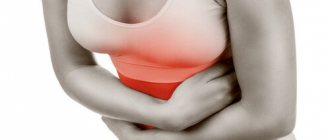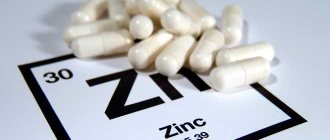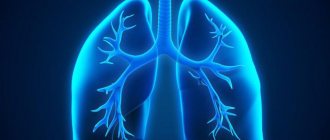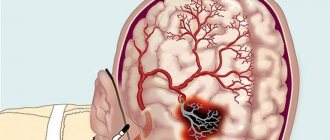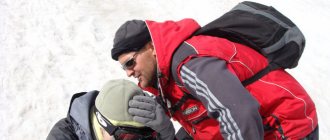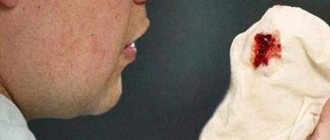A condition in which the rhythm, frequency and depth of breathing is disrupted, and a feeling of air deficiency occurs, is called shortness of breath. The causes and treatment of this disorder can be very diverse. Shortness of breath can occur under various conditions. So, for example, there is shortness of breath when talking, shortness of breath when lying down, after sleep, shortness of breath at rest, etc. The breathing of a person with shortness of breath is frequent and noisy; it is these manifestations that give others reason to assume the presence of shortness of breath. Shortness of breath can be a consequence of quite serious diseases, therefore, when it appears, it is necessary to contact a specialist as quickly as possible, who will competently explain what shortness of breath is and how it manifests itself, and also prescribe a comprehensive diagnostic examination to identify the causes of its occurrence.
The Therapy Center of the Yusupov Hospital offers high-quality diagnostics and effective treatment of diseases accompanied by shortness of breath. If necessary, a pulmonologist can be called to your home.
Types of shortness of breath
Shortness of breath can be of several types:
- inspiratory (shortness of breath while inhaling), expiratory (during exhalation) and mixed (with difficulty in inhaling and exhaling);
- tachypnea (increased shallow breathing) and bradypnea (decreased breathing);
- physiological - transient, reversible intensification of breathing (shortness of breath during physical exertion). The causes of shortness of breath in this case are that it is an adequate adaptive response to stress, injury, or an objectively low level of oxygen in the inhaled air;
- pathological (in case of airway obstructions due to bad habits, cardiovascular failure, obesity, lung diseases, hematopoietic system, etc.).
Objective research results
The presence of shortness of breath may be indicated by a forced sitting or semi-sitting position of the body (orthopnea). This position is taken to reduce the severity of shortness of breath caused by pathology of the left side of the heart.
Also, with shortness of breath, auxiliary muscle groups can take part in the act of breathing.
To diagnose shortness of breath, you need to pay attention to the depth, frequency and rhythm of breathing.
Wheezing may indicate the presence of expiratory dyspnea.
Since shortness of breath is a sign of a serious pathology, it is necessary to consider it in the complex of existing changes. Along with shortness of breath, other signs may be present that help diagnose the underlying disease.
Why does shortness of breath occur?
If a person suddenly develops severe shortness of breath, the reasons can be very diverse. Most often it is caused by the following conditions:
- cardiovascular diseases – due to these pathologies, blood circulation is impaired. Internal organs suffer from a lack of oxygen, and carbon dioxide accumulates in the blood. The body’s reaction to this condition is increased breathing: a larger volume of air is pumped through the lungs per unit of time. In the supine position and after physical activity, shortness of breath associated with heart pathology occurs or intensifies. Severe shortness of breath occurs with the patient sitting or half-sitting. This kind of shortness of breath is characterized by difficulty breathing;
- diseases of the respiratory system - the appearance of shortness of breath is associated with obstacles to the passage of air through the respiratory tract (for example, narrowing of the lumen of the bronchi). Therefore, shortness of breath is considered a typical symptom of bronchial asthma. With this disease, the patient experiences difficulty in exhaling. In addition, shortness of breath occurs in cases where the respiratory surface of the lung tissue is reduced. Such a decrease is accompanied by an increase in the intensity of lung function, i.e. frequent inhalation, which is necessary to maintain the required amount of oxygen entering the blood. The list of pathologies of the respiratory system accompanied by shortness of breath includes neoplasms, pneumonia, chronic obstructive pulmonary disease, etc.;
- anemia - even with normal activity of the lungs and heart, a deficiency of hemoglobin and red blood cells leads to insufficient provision of the organs with the necessary amount of oxygen. To compensate for this disorder, the body increases its breathing rate;
- neuroses and panic attacks - in these cases, clinical examinations do not reveal the presence of cardiovascular and pulmonary pathologies, but subjectively the patient suffers from lack of air, and the appearance of psycho-emotional changes provokes increased breathing, which causes shortness of breath;
- various tumors – shortness of breath occurs with a tumor of the thalamus, intestinal tumors, etc.;
- problems with the gastrointestinal tract. For example, hoarseness, cough, shortness of breath with esophagitis are characteristic symptoms;
- obesity and diabetes are common causes of shortness of breath.
Causes of pathology
All etiological factors that cause the development of dyspnea comprise 4 main groups:
- pathologies of the heart and blood vessels, in particular heart failure;
- respiratory failure;
- metabolic disorders and obesity;
- pulmonary hyperventilation syndrome.
Problems with the lungs can take the form of pathologies of the pulmonary vessels, diffuse lesions of the parenchyma, decreased bronchial obstruction, and muscle pathologies. Hyperventilation syndrome can develop against the background of certain types of neuroses, as well as with neurocircular dystonia.
Shortness of breath in people of different age categories
Shortness of breath can occur in people of all ages, from infants to the elderly.
In children, shortness of breath can be both physiological and pathological. The appearance of physiological shortness of breath is caused by physical exertion or high anxiety, which is considered normal. When the respiratory system is immature, pathological shortness of breath occurs in the infant. How to determine the type of shortness of breath and its causes is decided by the pediatrician, selecting the necessary diagnostic methods.
In old age, people's tolerance to physical activity decreases and the efficiency of the respiratory system decreases. Due to age-related changes, the physical strength of the respiratory muscles decreases, as a result of which gas exchange worsens and normal breathing becomes difficult. In addition, older people tend to have diseases of the cardiovascular system and lungs, which lead to shortness of breath. Most often, they do not pay attention to this symptom for a long time, so the diseases that accompany it are diagnosed at advanced stages. As a result, treatment becomes more difficult, the quality of life and its duration are significantly reduced. So it is better to immediately seek medical help if shortness of breath occurs in older people, without waiting for the condition to worsen.
The best pulmonologists in Moscow - Doctor of Medical Sciences, Professor Alexander Vyacheslavovich Averyanov, Candidate of Medical Sciences Alexander Evgenievich Shuganov are receiving appointments at the therapy center of the Yusupov Hospital. Klina is equipped with innovative high-tech equipment for conducting the most modern diagnostic studies. Thanks to an integrated approach involving specialized specialists in various fields, our doctors identify the exact cause of shortness of breath and select an effective treatment regimen, taking into account the individual characteristics of each patient.
Characteristic signs
View gallery
If lung function is impaired, expiratory shortness of breath may occur. In this case, inhalation is performed normally, but exhalation is difficult. To release air from the lungs, the patient is forced to make efforts. The respiratory muscles begin to work more actively.
Many people complain of pain in the chest area. Cyanosis of the lips may also develop, and the skin becomes noticeably pale. People with this type of dyspnea often experience excessive sweating. As the situation worsens, the skin may acquire a gray tint, and weakness noticeably increases.
Despite the fact that expiratory shortness of breath makes it difficult to exhale, the patient may experience an attack of suffocation. But dyspnea can also be unexpressed. The intensity of the manifestations of shortness of breath will depend on the reasons for which it appeared, on the stage of the disease, and the presence of sputum.
With the development of this type of dyspnea, air can enter the lungs, but due to swelling and spasm of the walls of the bronchi, it does not come out completely. Often the situation is complicated by the accumulation of viscous mucus.
What is shortness of breath in humans: symptoms
The occurrence of shortness of breath in the initial stages of damage to the cardiovascular and respiratory systems is associated with physical exertion (for example, when the patient climbs up the stairs). As the pathology progresses, shortness of breath and fatigue appear even with a slight load (walking on a flat surface, tying shoelaces, etc.), as well as at rest.
Patients perceive shortness of breath quite subjectively. It may be accompanied by the following symptoms:
- difficulty breathing (inhalation/exhalation);
- compression in the chest;
- feeling of congestion in the chest area;
- tightness in the chest;
- feeling of lack of air;
- inability to take a deep breath or exhale completely;
- suffocation.
Classification
When establishing the degree of inspiratory dyspnea, the connection between respiratory disorders and physical activity is taken into account. Normally, in a calm state, a person makes no more than 14-20 respiratory movements per minute, and the feeling of insufficient air inhalation bothers only after heavy exertion. There are 4 degrees of shortness of breath, indicating the probable presence of the disease:
- Mild degree
. Occurs when walking quickly, climbing stairs or going down a steep descent. It goes away quickly on its own. - Average degree
. Observed at a normal walking pace. The patient is forced to slow down or take breaks. - Severe degree
. Difficulty breathing is observed when walking slowly at a distance of up to 100 m. The patient often stops to rest. - Very severe
. The lack of oxygen is felt in complete physical and emotional peace. The patient's activity is severely limited.
Shortness of breath: diagnosis
Diagnosis of the underlying pathology that provoked shortness of breath is carried out using the following research methods:
- general examination (general medical examination, counting the frequency of respiratory movements of the chest, listening to the lungs with a phonendoscope);
- general blood test;
- chest radiography;
- computed tomography of the chest;
- spirometry (spirography) – to assess air flow through the respiratory tract and the ability of the lungs to expand;
- tests using a bronchodilator - spirometry is performed before and after inhalation with a bronchodilator drug. This study allows us to evaluate the reversibility of bronchial narrowing;
- bronchoprovocation test - spirometry is performed before and after inhalation of histamine and methacholine. It is carried out to detect increased sensitivity of the bronchi, which causes bronchospasms;
- studies of the gas composition of the blood (the level of tension in the blood of carbon dioxide, oxygen is determined, the saturation of the blood with oxygen is assessed);
- body plethysmography – allows you to evaluate the function of external respiration. It is used to assess all volumes and capacities of the lungs, incl. those that spirography cannot determine;
- electrocardiography (ECG), echocardiography (ultrasound of the heart, echocardiography) - allows you to assess the functional state of the heart and pressure in the pulmonary artery system;
- fiberoptic bronchoscopy is a study that is used to examine the mucous membrane of the bronchi from the inside and study its cellular composition with a special preparation. The use of this method is advisable for patients with an unclear diagnosis. Allows you to exclude other possible diseases with similar symptoms;
- angiopulmonography – during the procedure the blood vessels of the lungs are examined;
- lung biopsy;
- consultations with a pulmonologist, cardiologist.
Shortness of breath: treatment
Pulmonologists at the Yusupov Hospital Therapy Center select an individual drug therapy regimen for each patient, depending on the disease that provoked the onset of shortness of breath.
The clinic’s rehabilitators draw up a plan for physical training and pulmonary rehabilitation to increase the patient’s tolerance to physical activity, and prescribe breathing exercises using various methods (diaphragmatic breathing, inflating balloons, blowing air through a tube, etc.) that train the respiratory muscles.
In severe cases, artificial ventilation is used.
Shortness of breath accompanies pathologies of various organs and systems of the human body. Therefore, each individual case requires specific therapy, aimed primarily at eliminating the underlying disease causing shortness of breath.
How to treat shortness of breath caused by cardiovascular diseases?
Patients with shortness of breath associated with cardiovascular diseases are prescribed therapy, the goals of which are:
- improve oxygen supply to the heart;
- increase cardiac output;
- reduce blood stagnation in the lungs.
The use of nitrates, glycosides, and diuretics is effective. Patients with heart failure are recommended to always have nitroglycerin available, which helps to immediately dilate the blood vessels of the heart muscle.
Oxygen therapy is used to replenish the lack of oxygen in the blood.
How to get rid of shortness of breath: first aid
Providing first aid for shortness of breath to a person suffering from heart disease involves doing the following:
- call an ambulance;
- before the arrival of doctors, it is necessary to ensure the flow of fresh air into the room where the patient is located by opening the window;
- the patient must be seated on a chair;
- remove the tie and scarf from the patient’s neck, unbutton the top buttons on the shirt;
- Place a nitrosorbide tablet under the patient’s tongue and give any diuretic.
How to cure shortness of breath associated with pulmonary diseases?
For shortness of breath caused by pulmonary pathologies, patients are advised to drink plenty of alkaline fluids (except for patients with pulmonary edema).
To relieve bronchospasm, selective β2-adrenergic agonists (salbutamol, fenoterol, terbutaline, formoterol, clenbuterol, salmeterol) are prescribed. M-cholinergic receptor blockers are effective for relaxing the muscles of the bronchi.
Patients suffering from bronchial asthma are prescribed inhalations with NSAIDs and steroid therapy.
Treatment of shortness of breath due to bronchitis involves the use of medications to separate sputum. These include:
- acetylcysteine;
- carbocysteine;
- bromhexine;
- ambroxol.
How to get rid of shortness of breath associated with allergies?
Every person suffering from allergic diseases should know what to take for shortness of breath of this etiology:
- diazolin;
- diphenhydramine;
- suprastin;
- tavegil;
- fenistil;
- claritin;
- desloratodine, etc.
As an additional therapy for shortness of breath caused by allergies, you can use traditional medicine: decoctions of plants that have an expectorant effect (from plantain, pine buds, coltsfoot), as well as hot foot baths.
How to deal with shortness of breath of a psychogenic nature?
Shortness of breath quite often accompanies mental disorders - melancholy, panic attack, depression. Patients suffering from these conditions are prescribed sedatives, antidepressants and tranquilizers. The use of therapeutic hypnosis is also effective. Treatment is prescribed exclusively by a psychotherapist.
Shortness of breath, especially at rest, is an alarming symptom that often manifests quite serious pathologies that require immediate examination and urgent medical care. Therefore, if such a respiratory disorder occurs, it is necessary to urgently visit your doctor. You can make an appointment with a therapist or pulmonologist at the Yusupov Hospital by calling the phone number listed on the clinic’s website.
Traditional methods
Traditional medicine has accumulated considerable experience in eliminating shortness of breath through the use of medicinal plants. Here are some useful tips:
- Drinking a decoction of coltsfoot relieves shortness of breath with difficulty breathing.
- Using wild rosemary decoction is an excellent remedy for shortness of breath.
- An infusion of birch leaves normalizes breathing in heart failure.
- To eliminate shortness of breath, you can prepare an elixir that has a healing effect. Combine 250 g of chopped garlic and the juice of 20 lemons. Pour the mixture into a dark glass container and keep in the dark for 10 days. Take the resulting drug 1 tsp. before meals three times a day. It is recommended to drink it with plenty of water.
You should not rely only on traditional methods of treating shortness of breath, since, while masking negative symptoms, they do not treat the disease that is their root cause.
